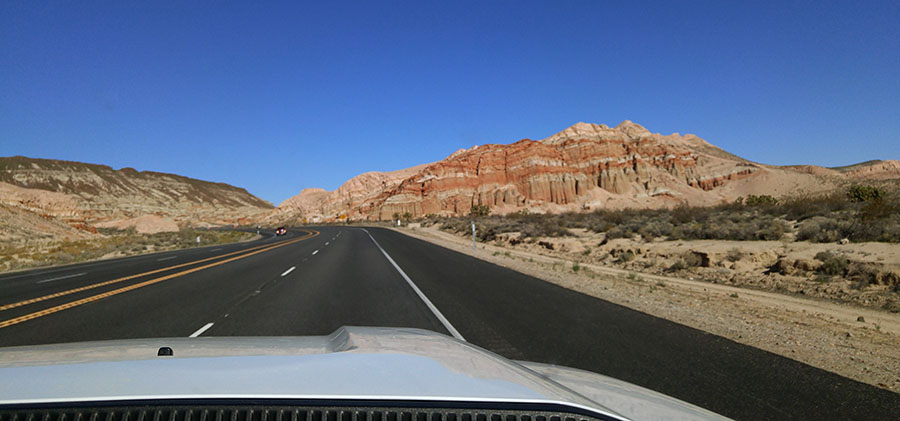We’re finally using the RV the way it was intended – to go someplace and sit still long enough to do some in-depth exploring. First on our big wish list in the western states was Death Valley National Park located in California, along the Nevada border.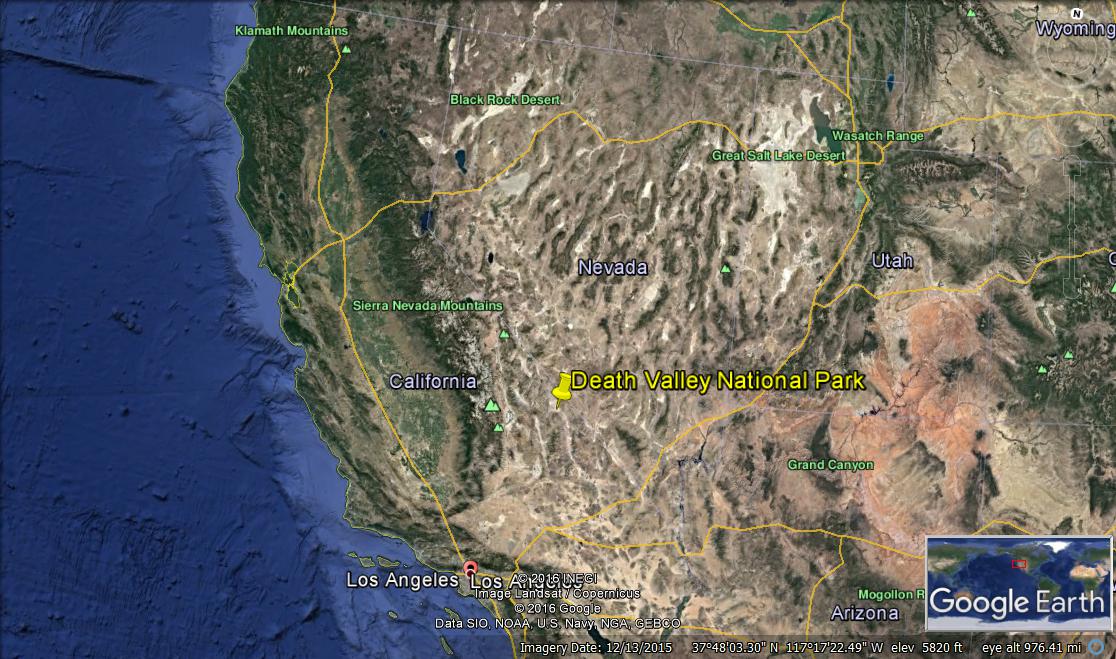 The park is 156 miles long and boasts that it’s the hottest, lowest, and driest place in the U.S. The hottest temperature in the world was measured in Death Valley – 134 degrees. Telescope peak, part of the Panamint Mountains on the western side of the valley is over 11,000′ tall, and it sits a mere 15 miles from the lowest point: Badwater Basin at 282′ below sea level. Average rainfall in the valley is about 2″ a year; contrast that with an average of 110″ a year in Petersburg. Fortunately we had more temperate weather when we visited, though we noticed that the thermometer was set up to display three digits.
The park is 156 miles long and boasts that it’s the hottest, lowest, and driest place in the U.S. The hottest temperature in the world was measured in Death Valley – 134 degrees. Telescope peak, part of the Panamint Mountains on the western side of the valley is over 11,000′ tall, and it sits a mere 15 miles from the lowest point: Badwater Basin at 282′ below sea level. Average rainfall in the valley is about 2″ a year; contrast that with an average of 110″ a year in Petersburg. Fortunately we had more temperate weather when we visited, though we noticed that the thermometer was set up to display three digits.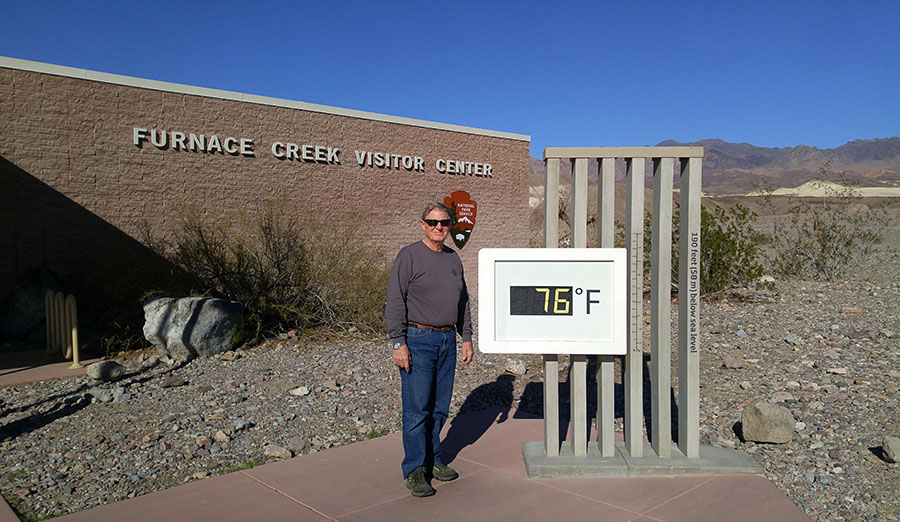 There is so much to see and do in Death Valley that it will take at least two postings to just show you a little bit. We started with a hike up Golden Canyon where the rocks live up to their nickname, with yellow dominating other pastel shades of pale green and rose.
There is so much to see and do in Death Valley that it will take at least two postings to just show you a little bit. We started with a hike up Golden Canyon where the rocks live up to their nickname, with yellow dominating other pastel shades of pale green and rose.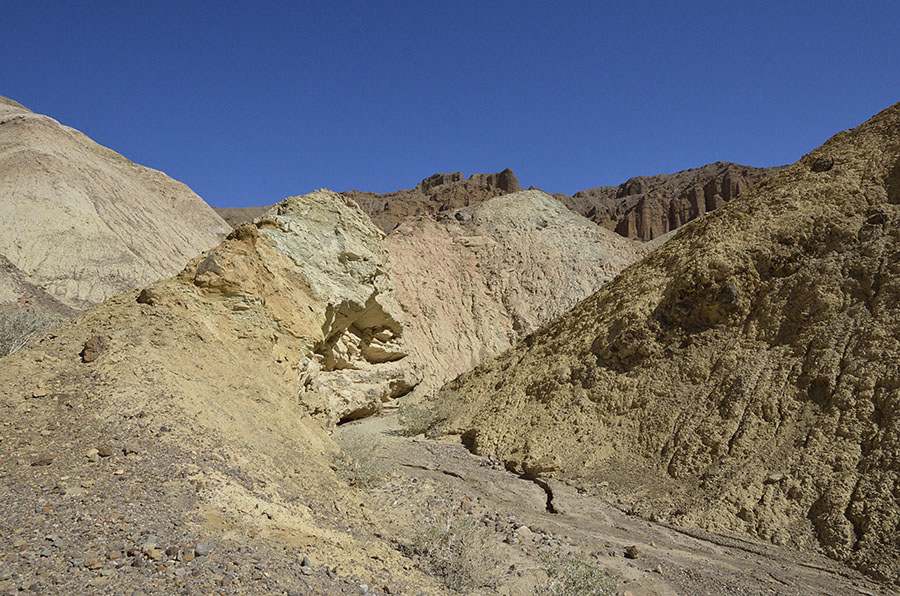 Life in the canyon was sparse – a few scrubby bushes and some lizards, and hiking over the rock rubble required a little attention to avoid turning an ankle.
Life in the canyon was sparse – a few scrubby bushes and some lizards, and hiking over the rock rubble required a little attention to avoid turning an ankle.
The Mesquite Sand Dunes – one of several sand dune formations in the park – were only a mile from our camp site, and I loved how the dunes looked in the early morning light…
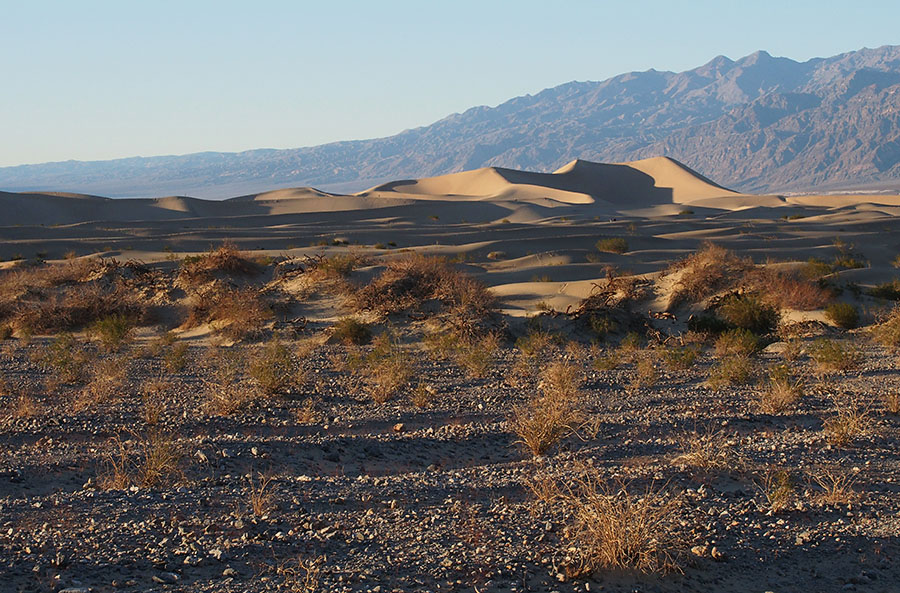
…as well as the beauty of the setting sun on the sand and the mountains in the distance.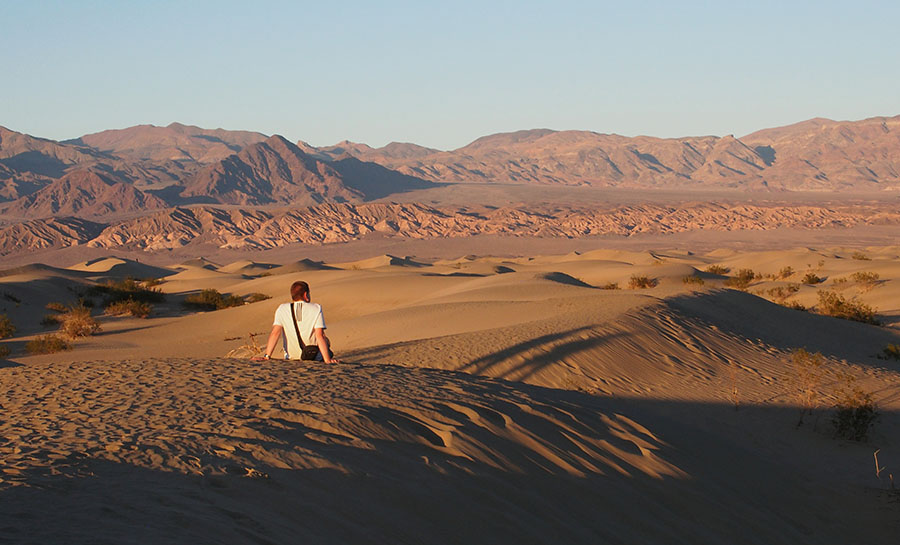 We always see people taking “selfies”, so we decided the dunes were a nice spot to take one too.
We always see people taking “selfies”, so we decided the dunes were a nice spot to take one too.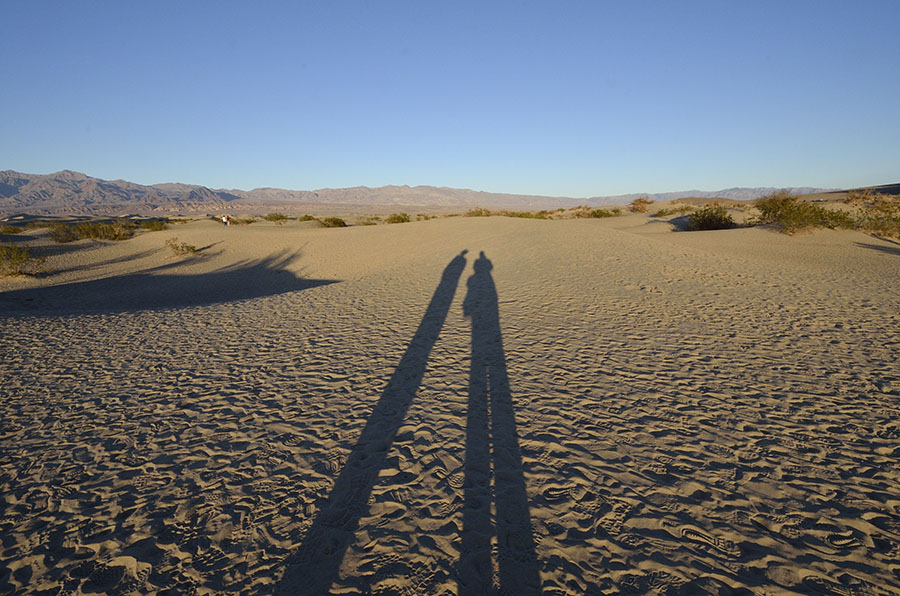
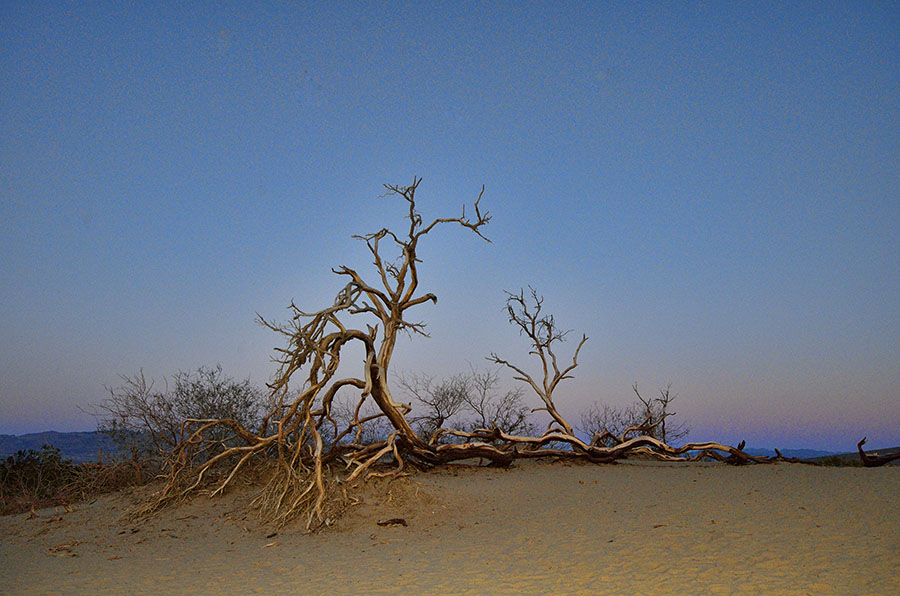 The park received almost an inch of rain about 10 days before we arrived – that’s half of their annual average! All that rain in a short time caused flooding and damage to some of the park’s roads, so we had to walk down dirt roads to see some things. I love stark and dramatic landscapes, so I had to see the Devil’s Golf Course on the valley floor. It was a long, hot walk but it was worth it to see the craggy pock-marked rock dusted in white salts (sodium chloride and borax) that looked like snow.
The park received almost an inch of rain about 10 days before we arrived – that’s half of their annual average! All that rain in a short time caused flooding and damage to some of the park’s roads, so we had to walk down dirt roads to see some things. I love stark and dramatic landscapes, so I had to see the Devil’s Golf Course on the valley floor. It was a long, hot walk but it was worth it to see the craggy pock-marked rock dusted in white salts (sodium chloride and borax) that looked like snow.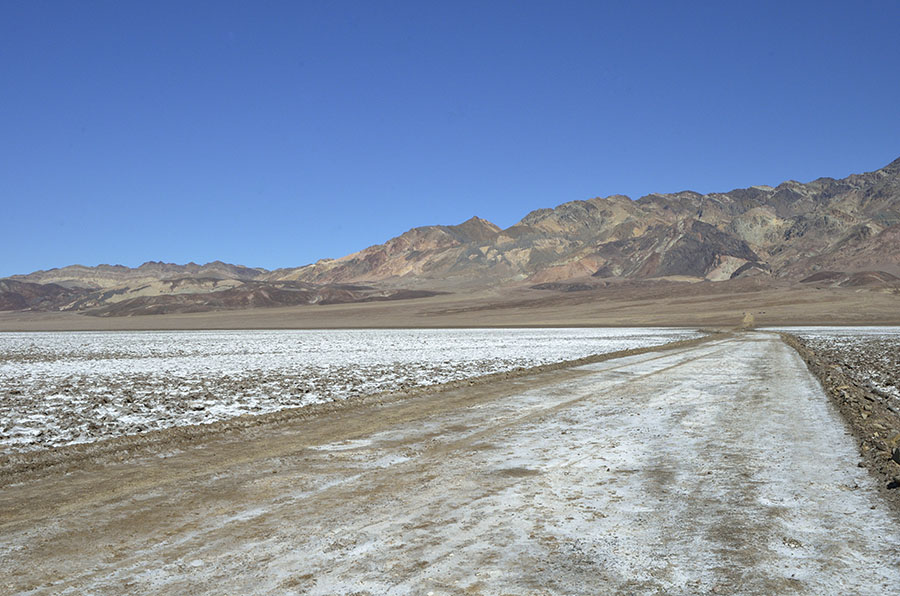
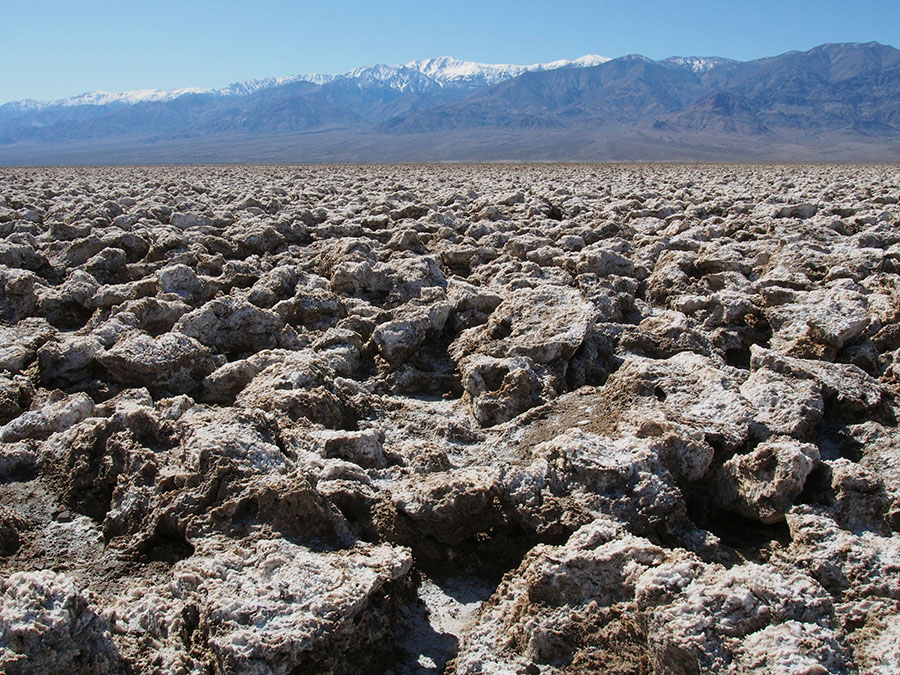 Located below sea level, the valley floor has such a wide variety of terrain – the dunes, the low pitted rocks of the “golf course”, borax flats, and the 200 square mile salt flats at Badwater Basin – the lowest point in North America.
Located below sea level, the valley floor has such a wide variety of terrain – the dunes, the low pitted rocks of the “golf course”, borax flats, and the 200 square mile salt flats at Badwater Basin – the lowest point in North America.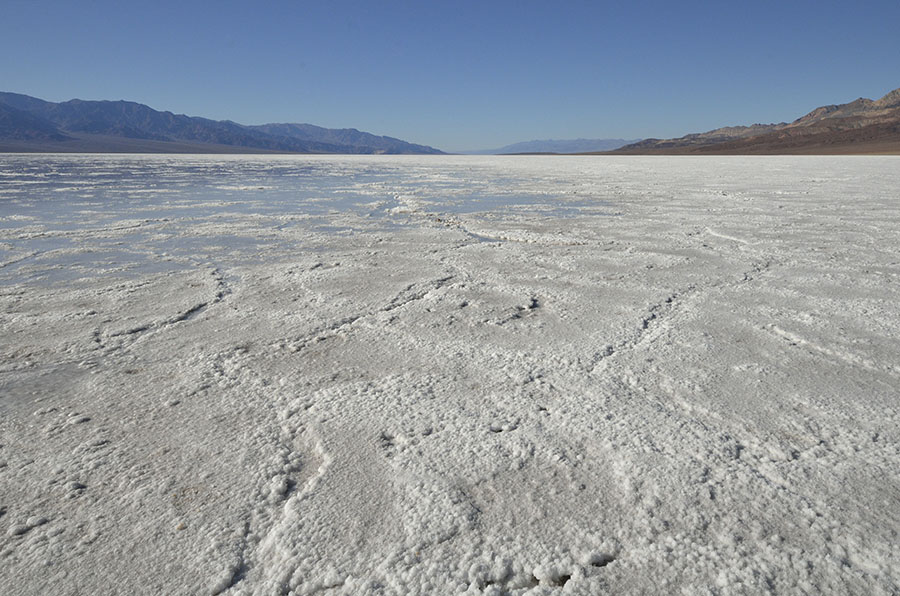 You might notice some water on the flats from the recent and unusual rain, and as the water evaporated new salt crystals were forming before our eyes.
You might notice some water on the flats from the recent and unusual rain, and as the water evaporated new salt crystals were forming before our eyes.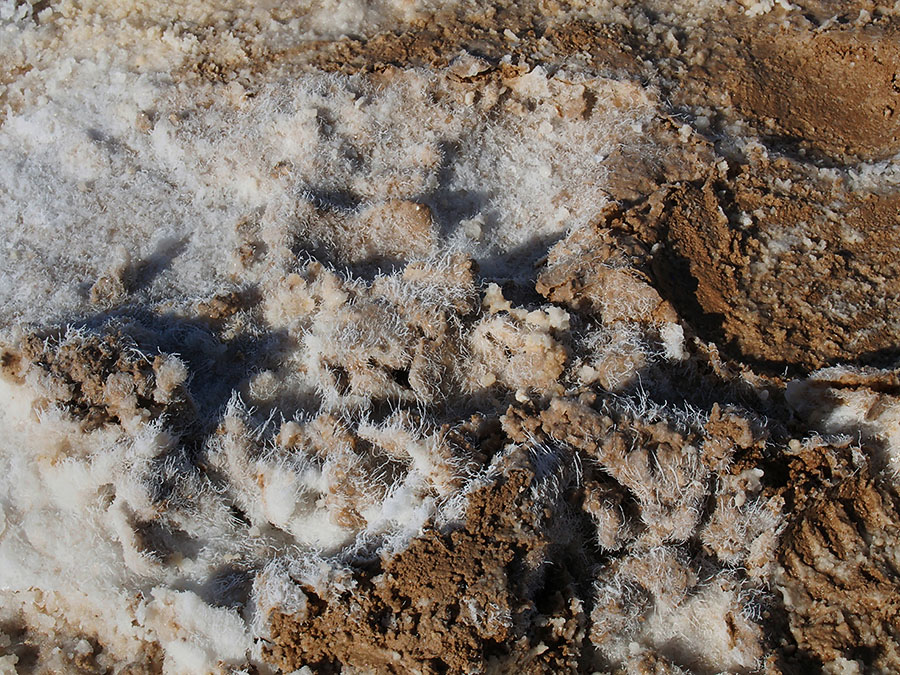
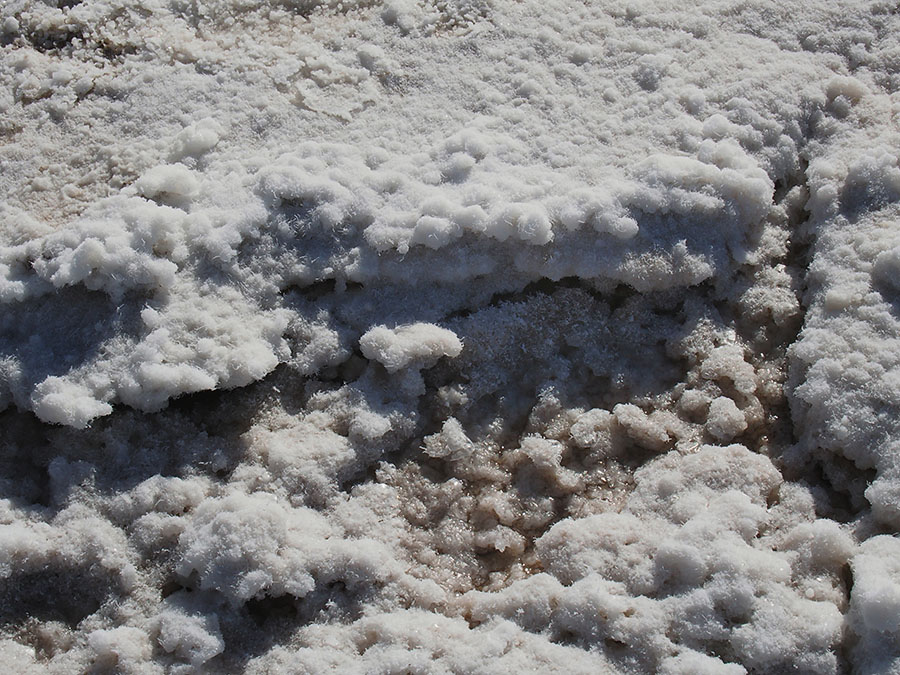 To get a better view of the entire valley, we drove up to Dante’s View for sunset. It was a good thing we had fleece jackets in the truck because it was quite chilly up at 5400′. Our jaws dropped as we took in the view of the entire valley, watching the line of blue shadow move up the mountainside as the sun dipped lower.
To get a better view of the entire valley, we drove up to Dante’s View for sunset. It was a good thing we had fleece jackets in the truck because it was quite chilly up at 5400′. Our jaws dropped as we took in the view of the entire valley, watching the line of blue shadow move up the mountainside as the sun dipped lower.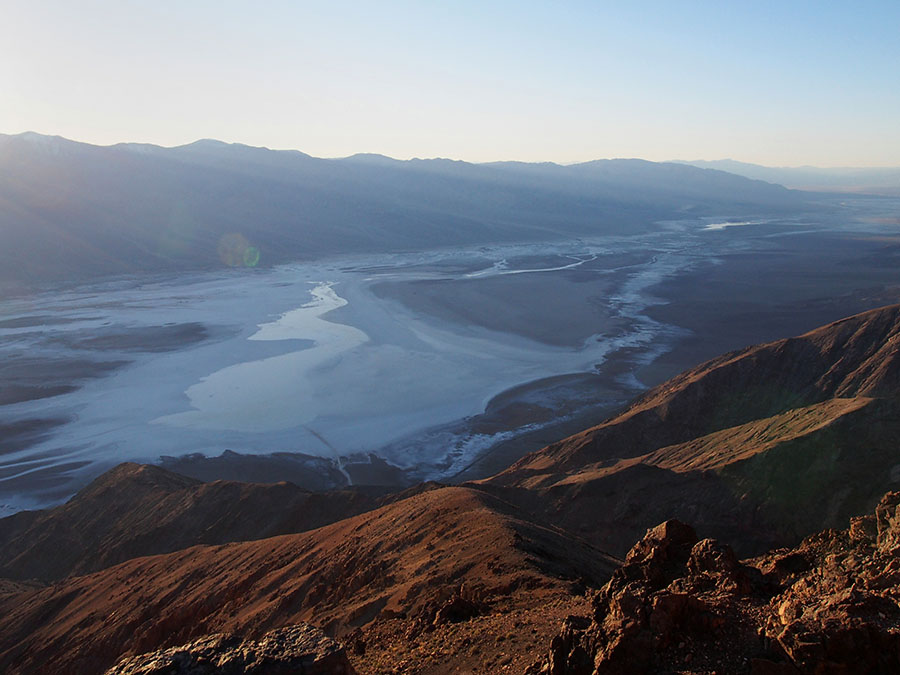 The big white patch on the left is Badwater Basin (which we left an hour earlier), and you can see the dark trail made by humans walking out to the water’s edge. Watching the sun set from this vantage point was a perfect way to end our first full day in the park.
The big white patch on the left is Badwater Basin (which we left an hour earlier), and you can see the dark trail made by humans walking out to the water’s edge. Watching the sun set from this vantage point was a perfect way to end our first full day in the park.

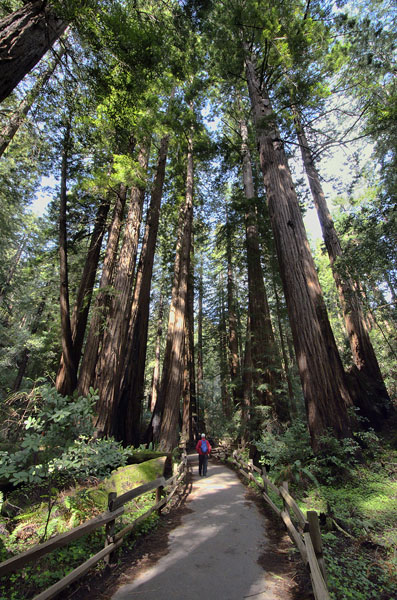 There’s just something soothing and healing about a walk in the woods, though we’re used to more solitude in Alaska. The crowd was surprising to us for a weekday but it’s good to see so many people outside, beyond the reach of cell towers. We found some side trails that were more isolated, to listen to the birds and the rustling of the wind in the trees.
There’s just something soothing and healing about a walk in the woods, though we’re used to more solitude in Alaska. The crowd was surprising to us for a weekday but it’s good to see so many people outside, beyond the reach of cell towers. We found some side trails that were more isolated, to listen to the birds and the rustling of the wind in the trees.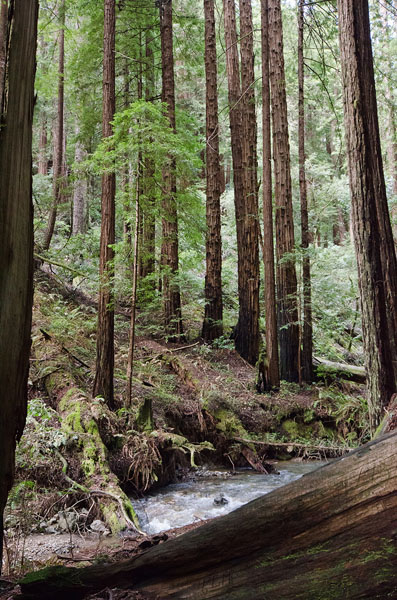 Winter hasn’t given up its grip just yet, but a few tiny flowers were hinting at the changing season.
Winter hasn’t given up its grip just yet, but a few tiny flowers were hinting at the changing season.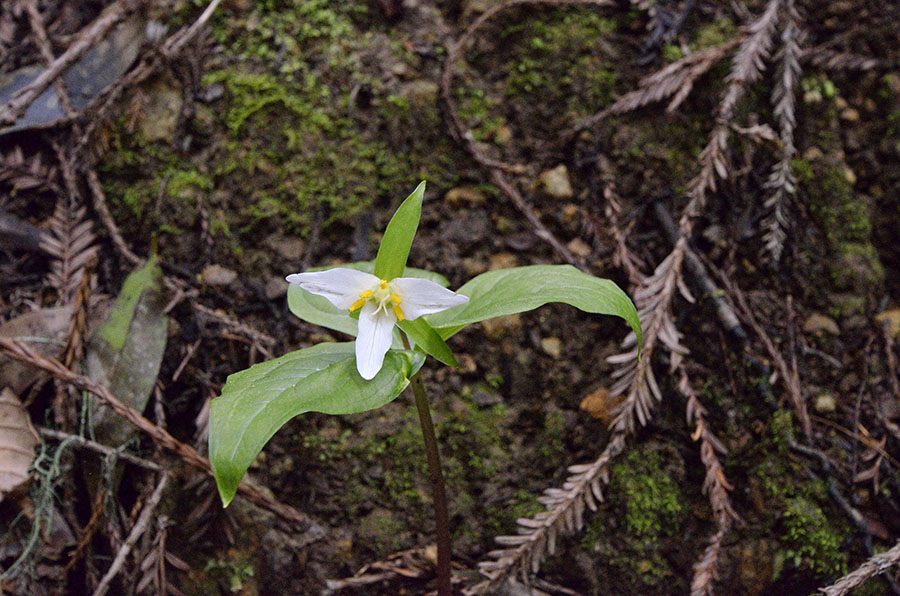 I first visited these woods over 30 years ago, and was excited to return. Despite more paved paths and more people, the trees did not disappoint.
I first visited these woods over 30 years ago, and was excited to return. Despite more paved paths and more people, the trees did not disappoint.